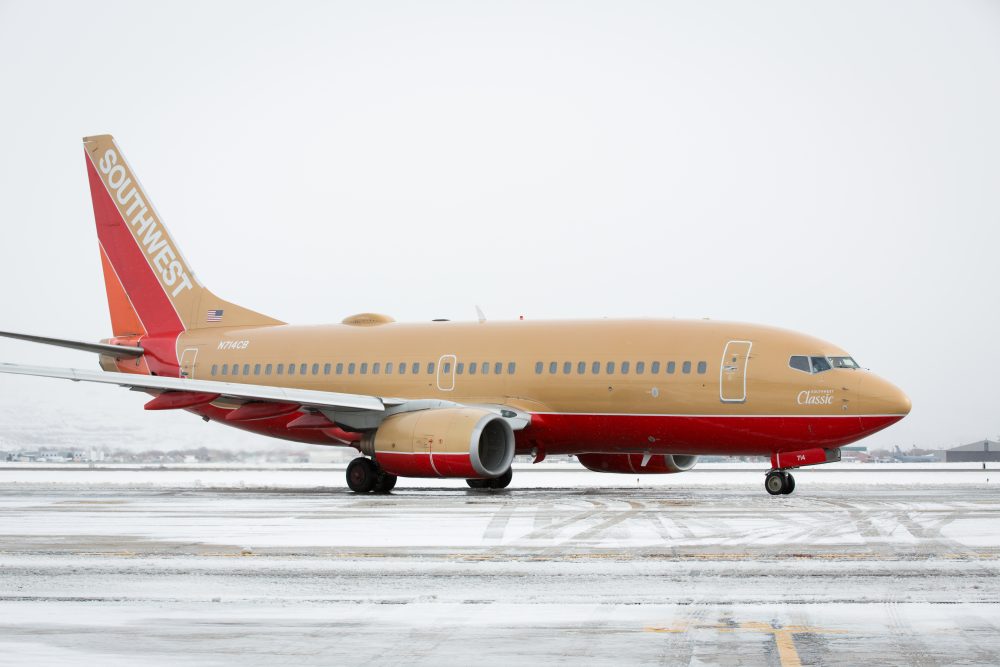On this episode, I talk about the Southwest Airlines Companion Pass. What it is, how to get it, and, most importantly, how all of you can designate me as your companion.
It’s a highly sought after travel reward. I lean towards it being slightly over valued, but many find it to be a rewarding perk. If you’re in what we call “2 player mode” meaning you have a spouse or significant other earning points in tandem, it may be worth considering. I’ll go over some of the finer points and you can decide.
What is the Southwest Companion Pass?
The Companion Pass is a benefit that allows travelers to choose one companion to fly free on accompanying flights with pass holder member. Only taxes ($5.60) are charged for the fare. Members designate one companion for the validity period.
When is the validity period?
According to Southwest, the validity period is based on the calendar year:
Once Companion Pass status is earned, the Member can begin using his/her Companion Pass immediately once he/she has designated a Companion. The Member will maintain Companion Pass status for the remainder of the calendar year in which the status was earned and for the entire calendar year immediately following.
If you can earn the CP early in the year, you’ll have it for that year and the entire following year. A common and worthwhile strategy is to try to time it so you’ll earn all 110,000 points as early in the year as possible. This maximizes the amount of time you have access to the CP.
How do you earn the Companion Pass?
To get the CP, you’ll need to earn 110,000 “qualifying” Rapid Rewards points or fly 100 one-way flights in a calendar year. Casual travelers won’t come close to taking 100 flights, so the easiest way to get the CP is by earning points, typically through a combination of Southwest credit card sign-on bonuses and usage. That’s because points earned on the Southwest credit cards are technically qualifying points. Other qualifying points include, of course, revenue flights on SW and base points earned from Rapid Rewards partners. Booking hotels or purchasing goods through the RR portal, for instance, would count towards your CP point total.
Non-qualifying points would be things like point transfers from partner programs, purchased points, or points transferred between accounts. So, having points earned through a Chase Sapphire product which can be transferred directly to Rapid Rewards, would not count towards CP progress.
So, the three primary ways to earn points:
- Revenue fares
- SW credit card points
- Base points from Rapid Rewards partners
What’s the easiest strategy to earn the Companion Pass?
As I mentioned earlier, earning all 110,000 points as early as possible in a calendar year is essential to maximizing the value of the CP. Any points earned prior to the closing of your December statement period will not count towards your progress. Here’s how Southwest puts it:
Your December statement closing date is the cutoff for purchases made with your Rapid Rewards Credit Card to count towards a Companion Pass for that calendar year.
For example, if your December statement closes on December 16, points for purchases posted to your statements made after that date will not count toward the 110,000 qualifying points for the year.
If you’re going to go the credit card route, it would make sense to apply for cards toward the end of the calendar year, then hit your spending minimums for the sign-on bonuses after January 1st. You want to make sure your points aren’t hitting your account prior to the closure of your December statement date. Apply late in the year, spend early the next year. –
There are, currently, five possible Southwest credit cards to get. It will take most people a combination of two cards to reach the 110,000 point threshold. I’m not going to get into the finer details of each card here. Know that the three consumer cards all offer sign-on bonuses of 40,000 Rapid Rewards points after spending $1000 in the first three months the accounts are open. Those are sizeable bonuses for a relatively modest requirement. The three consumer cards, the Plus, Priority and Premier vary slightly in annual fee and accompanying benefits.
If you qualify, the two business cards offer a more lucrative, expedited path. The Premier business card offers a 60,000 point bonus for $3000 worth of spend in three months, while the Performance business card has one of the highest bonuses around, at 80,000 points for $5000 worth of spend in three months. Keep in mind, that the spending you do to achieve the bonuses will also award you points, so getting two cards with sign-on bonuses of 110,000 points combined may not be necessary. Of course, this all depends on your spending habits. It’s always necessary to point out that this strategy of leveraging credit card bonuses for discounted travel is all predicated on the idea that we aren’t expanding our spending budget to accommodate.
You or someone in your household will also have to navigate around Chase’s 5/24 rule. Essentially, if you have signed up for 5 or more credit cards within 24 months, in virtually any program, even those outside of Chase, Chase will not approve you for one of the cards in their family- these include the Southwest credit cards.
Can I add my companion to a flight booked with points?
Yes. That’s a nice thing. You’re going to earn all these points through the sign-on bonuses, you can now use those points for your booking and your companion will still fly free plus taxes.
Can I change my authorized companion?
Yes. You can change your dedicated companion up to three times a year. However, travel with a former companion must be complete before being able to do so.
Overall, is the Companion Pass worth pursuing?
As with everything in, well, life, it depends. If you frequently travel with the same companion(s) and to and from destinations serviced efficiently by Southwest, it may very well be. Keep in mind that there is a significant opportunity cost if you’re using credit card sign-on bonuses to meet the point requirements. If you care about Chase, you’re giving up two slots that count towards 5/24. That may be negligible to some, as there are plenty of good cards and programs outside of Chase to consider. But also, consider the value that two different credit cards could offer. Part of this is figuring out how often you’re likely to use the CP during the time in which you’d have it. How many points or dollars will you save compared to similar travel with different cards? Asthejoeflies has a great breakdown of things to consider when trying to analyze opportunity costs for the CP: Determining the Value of the Southwest Companion Pass for Your Family
I tend to think the CP is more coveted than it deserves. This idea of “free” travel is enticing, but keep in mind that anytime you use points or miles to discount your airfare, regardless of the program, you’re essentially accomplishing the same thing as the Companion Pass- you’re accessing discounted travel opportunities. Being in Chicago does give me access to quite a few good SW routes, but they’re usually not our best option. Plus, acquiring a CP would lock us into SW as a primary carrier for the near future. I value flexibility in my plans. And there are plenty of point earning opportunities for me to supplement my lack of CP. Of course, there is also the major issue of seats for me. As everyone knows, all seats on all SW flights are the same. There’s no way for me to showcase my importance to the rest of the plebs boarding. As an influencer, it’s hard for me to turn my nose up at people who have access to the same amenities and seat pitch and width as me. I mean, I still do it, but it makes things difficult. Thoughts and prayers please.
As with most travel goals, getting the Companion Pass isn’t too challenging if you’ve got a plan. Know that if there are any factual errors in this episode, it is the fault of my assistant, as he did most of the research. If there are no factual errors then I did all of the research.
I hope you enjoyed the episode. Save travels. Be good to each other.
Feature image courtesy of Southwest Airlines











Add comment